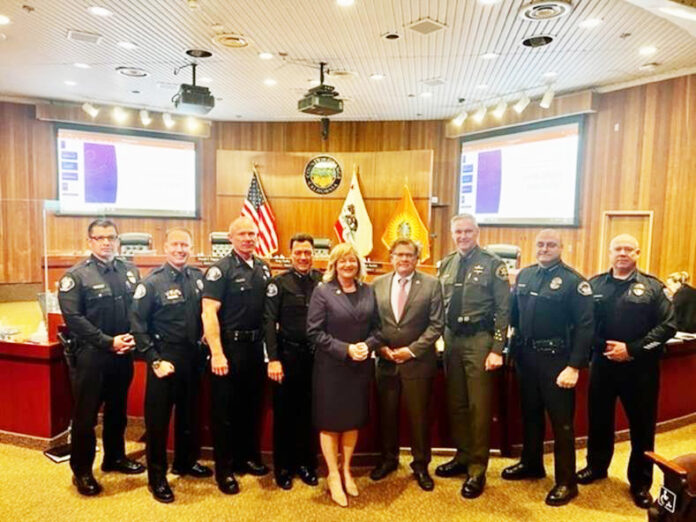On Thursday, March 3, 2022, Supervisor Foley hosted a public hearing describing the Fentanyl crisis in Orange County alongside Chairman Doug Chaffee, taking testimony from law enforcement, public health experts, and members of the public. The testimony generated recommendations for public health and law enforcement policy changes. Supervisor Foley plans to move forward many of the recommendations at the County Board of Supervisors and advocate for legislative changes to hold the real pushers of the poison accountable at the state and federal levels.
“For years, as Mayor of Costa Mesa and – now – as County Supervisor, I’ve advocated for and voiced my concerns about Fentanyl overdose, poisoning, and abuse in Orange County. Fentanyl kills indiscriminately and dealers target our youth with counterfeit prescription drugs like Xanax and other opioids,” said Supervisor Foley. “As a mom, I’ve mourned with mothers whose children were victims of this sinister and illicit drug practice.”
Panelists in attendance included Orange County Sheriff Don Barnes; Costa Mesa Police Chief Ronald Lawrence; Dr. Clayton Chau, Director of the Orange County Health Care Agency & County Health Officer; Dr. Veronica Kelley, Chief, Mental Health and Recovery Services Orange County Health Care Agency; Matt Holtzman, Chair of the County of Orange Behavioral Health Advisory Board, Chair of Government Relations for the National Alliance of Mental Illness (NAMI) Orange County; State Assemblymember Cottie Petrie-Norris, 74th District; California State Senator Patricia Bates, 36th District; and Mina Said, Deputy District Attorney at the Orange County District Attorneys’ Office.
“Our approach to the Fentanyl crisis must prioritize treatment, but also target traffickers and hold them responsible. The increase in fake prescription drugs containing fentanyl, targeted to young people through their social media, must be stopped. Our education efforts remain a critical tool in stopping the upward trend in fentanyl-related deaths and a multilayered approach is necessary. Prosecution of the actual drug dealers, combined with treatment for users and education of families, is key to reversing the addiction to fentanyl and related deaths,” said Supervisor Foley.
To tackle the fentanyl crisis on all fronts, Supervisor Foley calls for the following reforms:
Law Enforcement & Public Safety: Support for state and federal legislation that moves fentanyl to a schedule 1 drug, with enhanced sentencing penalties for injuries and death related to children, and targets the fentanyl traffickers … not their victims. Specifically, supporting Assemblywoman Cottie Petrie Norris’ AB 1351 to stop fentanyl at its source and appropriately align fentanyl trafficking with cocaine and heroin in California’s criminal code. Collaborating with the Federal government to address the dark web and social media, where drug trafficking cartels thrive. Increased funding to ensure that every deputy sheriff, police officer, and first responder carries Naloxone/Narcane to keep them safe and save lives during fentanyl exposure and overdose. Support expanded Coroner investigations and data collection on fentanyl-related deaths, so we can track the crisis, identify dealer areas, and target outreach and enforcement.
Treatment: Increasing healthcare treatment for fentanyl abuse, including evidence-based practices and medication-assisted treatment for community-members, unhoused residents, and inmates. Greater distribution of Naloxone in shelters, treatment facilities, clinics, school sites, major retail and event centers, and in jails.
Education: Expanding early intervention, prevention, and education campaigns like “1 Pill Can Kill.” Support for increased outreach to schools and parents, to educate them on the danger of exposure to and injection of fentanyl and what to do if they find it. Collaborations with cities and school districts to communicate resources available for the safe removal of fentanyl, when identified, and outreach resources for immediate help when needed.

